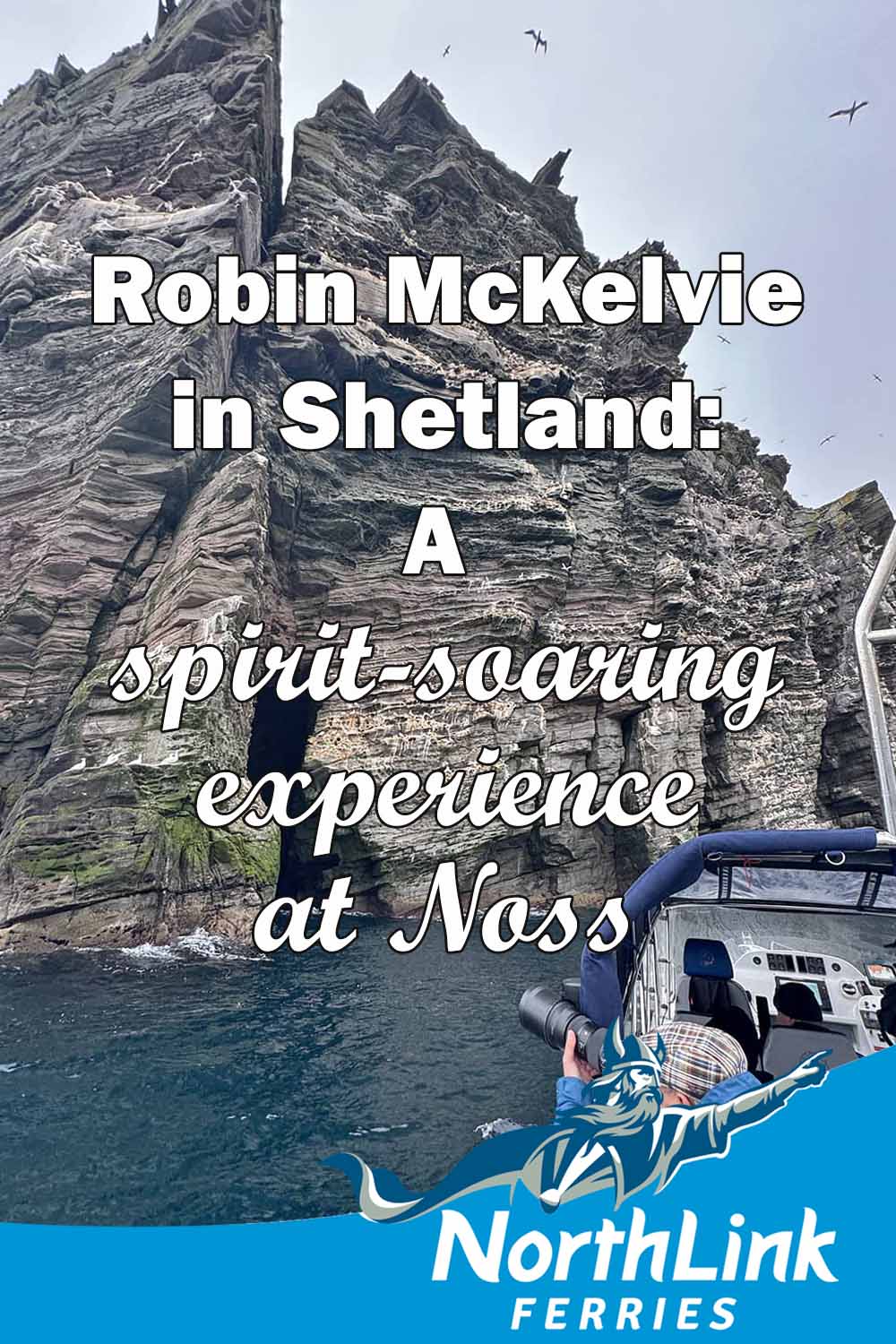Robin McKelvie in Shetland: A spirit-soaring experience at Noss
“Noss is a very special place, like no other in Shetland”, beams Phil Harris, experienced naturalist, owner and skipper at Shetland Seabird Tours as we ease out of Lerwick in search of this hallowed island. “Its natural drama is unparalleled and then there are the birds, with a world-class sweep of seabirds, from puffins through to gannets and skuas, with dolphins and whales in the local waters too.”
Noss is one of Scotland’s great gannetries, by default then one of the world’s top gannet sanctuaries. The UK’s largest seabird is remarkable bird to watch up close, not just the diving but also the mating rituals and then the more prosaic sides of family life tending to the nest.
Quite simply Noss is famed as one Europe’s finest wildlife sites, jointly run by NatureScot and the island’s owner. It is protected with the designations of the Noss Special Protection Area and the Noss Site of Special Scientific Interest, which overlap with the NatureScot Nature Reserve.
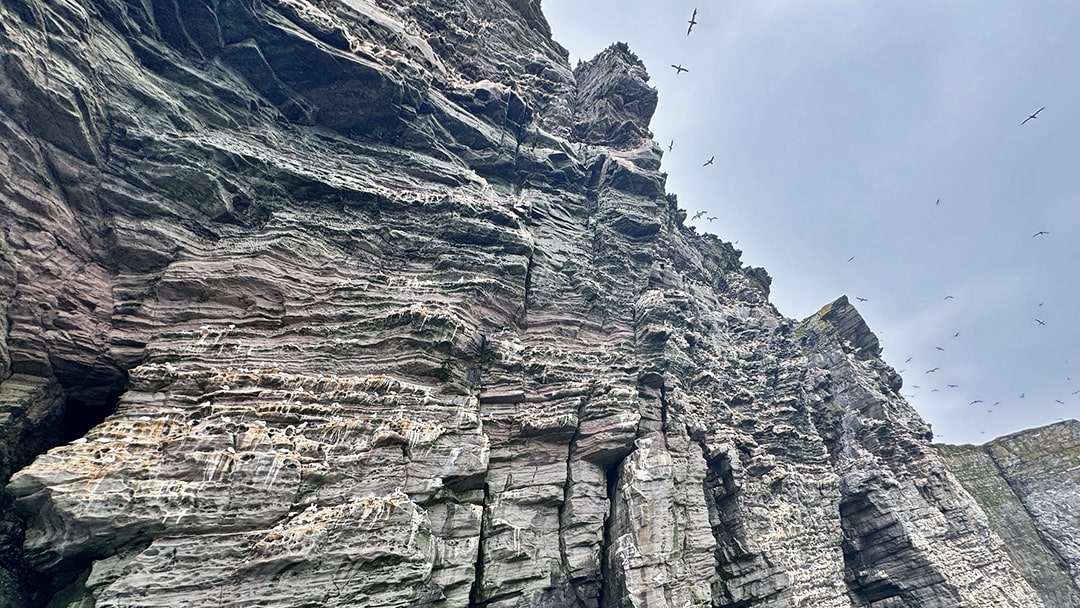
My interest in Noss was first fired up by a pal in Lerwick. Steve Mathieson talked of this mysterious “seabird city” and a “land of sandstone ledges and soaring cliffs that creates a remarkable natural amphitheatre.”
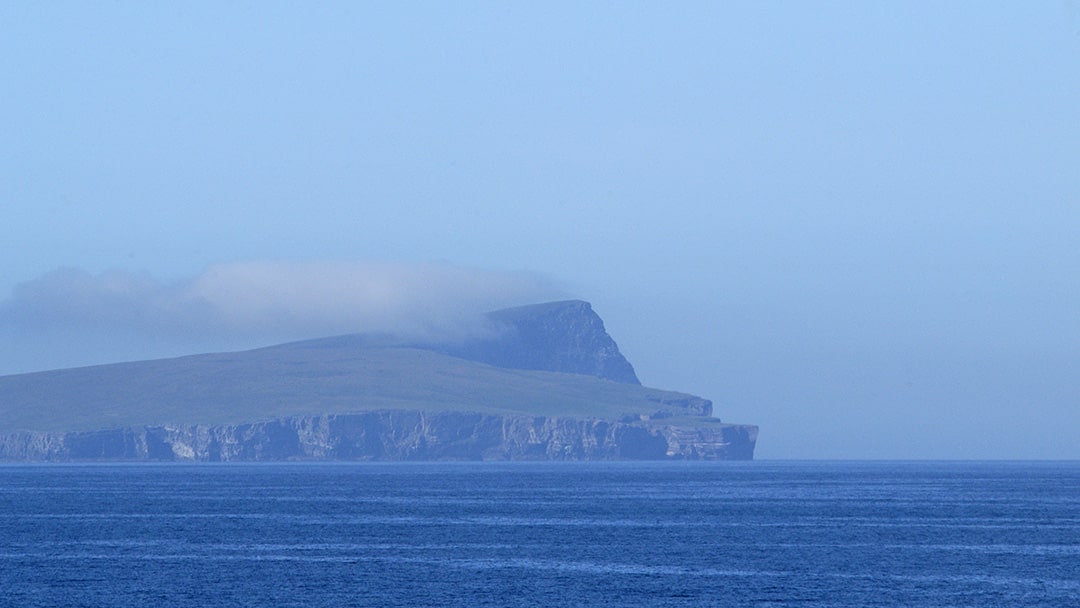
Noss’ name derives from the old Norse word for ‘nose’, apt if you’ve ever seen it sticking out teasingly in welcome in the distance on Northlink Ferries as you approach Lerwick. It is thought to have been a haven for man as far back as Neolithic times with the first settlers around 1,200 BC, long before the Vikings held sway.
From 1633, islanders used to cross on ropes connecting Noss to the detached stack of the Holm of Noss in search of seabird eggs. Over the next 200 years this gave islanders access to gulls’ eggs, and later a larger basket provided passage for up to 12 sheep. In Victorian times, a bizarre period in Noss’ history came when the Marquis of Londonderry leased Noss to breed Shetland ponies to work in his coal mines in northern England. The legacy today is active sheep farming.
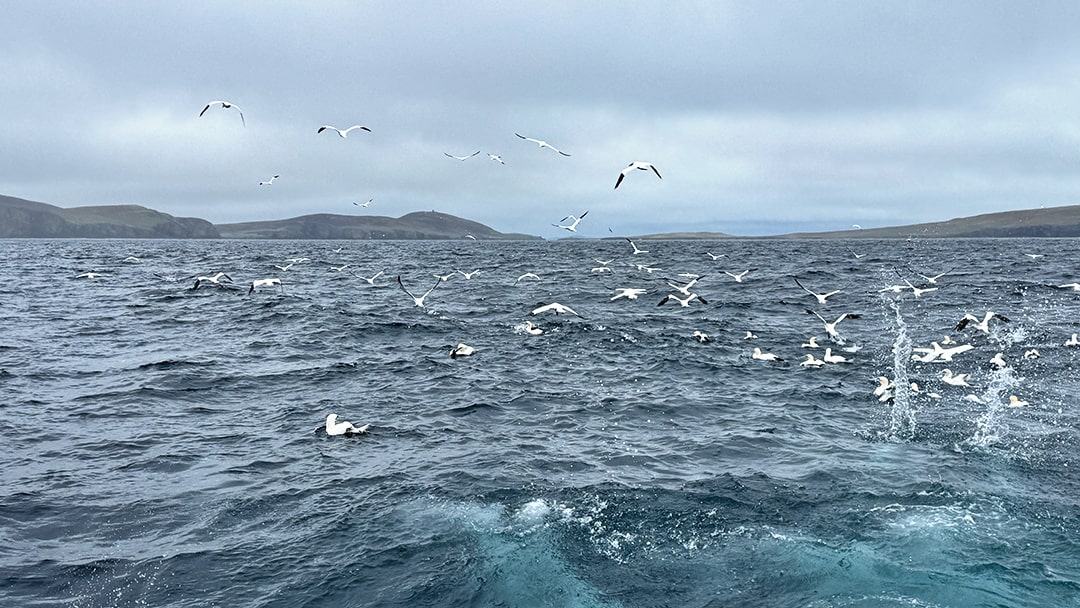
You just don’t forget your first sight of Noss. As we bash towards the isle’s 181 metre-high sea cliffs, the highest on Shetland’s east coast, on the Noup of Noss vault like Manhattan skyscrapers into the heavens above. Seabirds start to splash the waters all around us, first a few then a whole seemingly kamikaze air force of gannets plunging in towards the water in their improbable 70m/ph dives. The red sandstone cliffs are peppered with ledges, with tuffs of red campion, roseroot and sea thrift kept alive by the nourishment that seabird poo provides in such abundance.
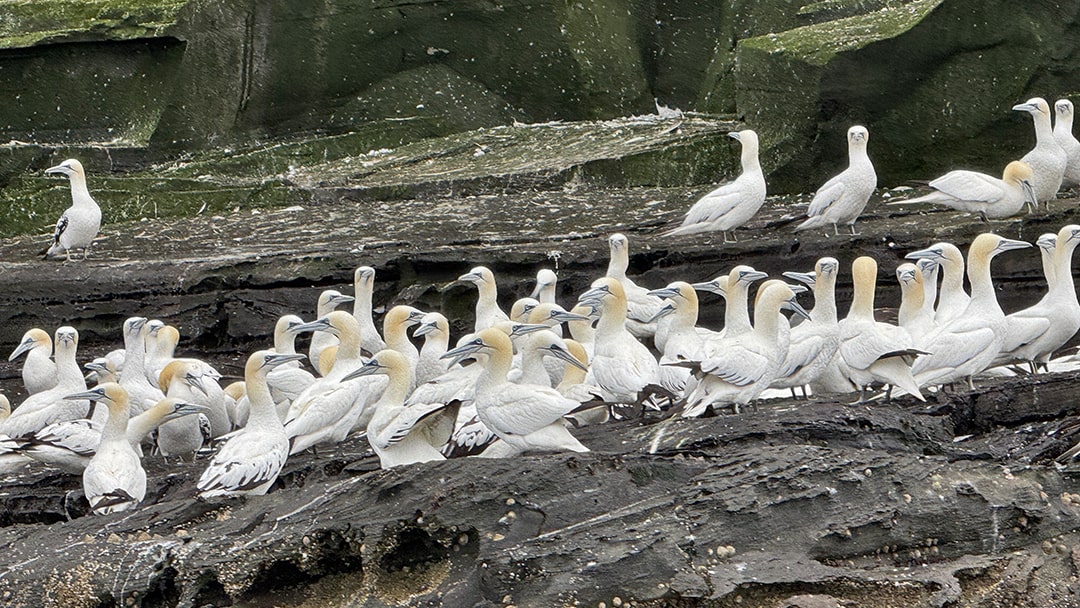
I’m glad to have Phil as my guide as he is a very experienced naturalist, sharing his deep knowledge with groups only ever a maximum of a dozen strong. I can see why his company have been up for so many esteemed awards. They get you up close and personal with the wildlife whilst also making sure you know exactly what you’re looking at.
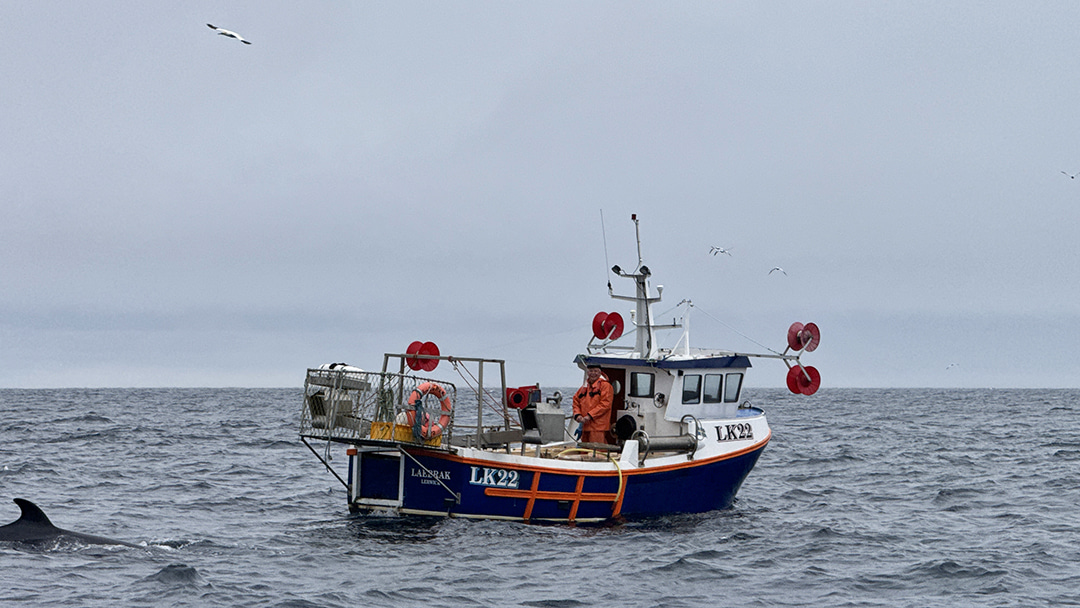
On the way out we encounter a minke whale circling a fishing boat, just an appetiser for the seabird frenzy that Noss is so famous for. Phil tells me Noss is one of Scotland’s great gannetries, by default then one of the world’s top gannet sanctuaries. The UK’s largest seabird is remarkable bird to watch up close, not just the diving but also the mating rituals and then the more prosaic sides of family life tending to the nest.
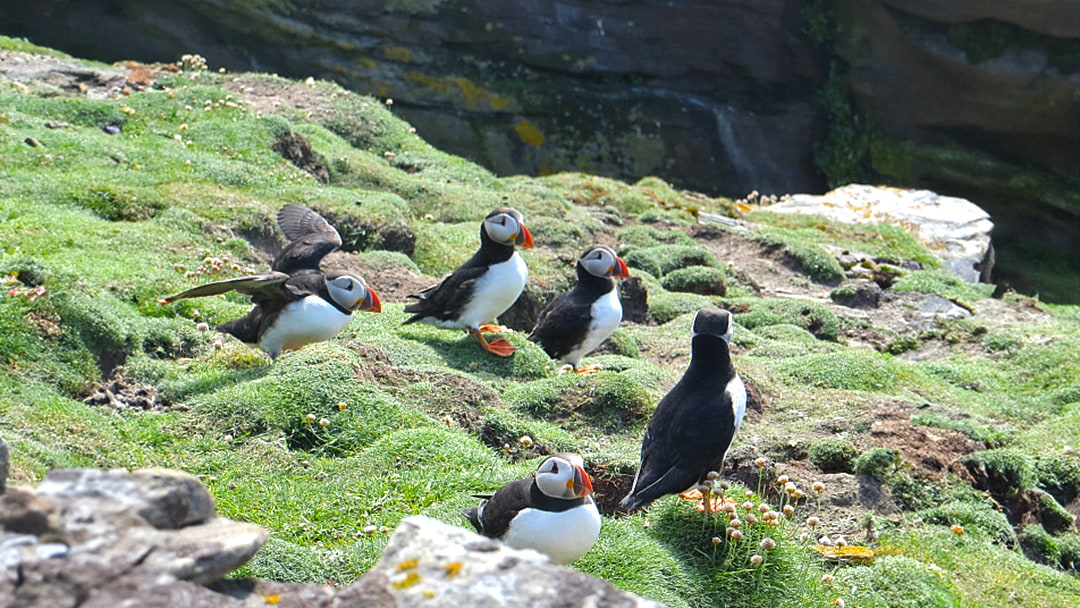
Another star attraction are the ridiculously cute puffins, who nest in burrows on the cliffs and make comical efforts to take off in search of food and land. There are guillemots too, who lay a single egg directly on the bare rock and similar looking razorbills, who chose more secure nests sites tucked in holes or hidden under boulders. I always keep a keen eye out for fulmars, a graceful bird you don’t want to get on the wrong side of. Literally. The vile smelling oil they secrete when threatened is just horrible and you really don’t want it in your hair or on your clothes.
Other birds of note include the seriously charming and graceful Arctic Tern, which divebombs in summer anyone daft enough to get close to its young. Those great Scottish scavengers, Great Skuas, may nest inland, but they pester the seabirds on the cliffs, snatching eggs, chicks and even infirm birds.
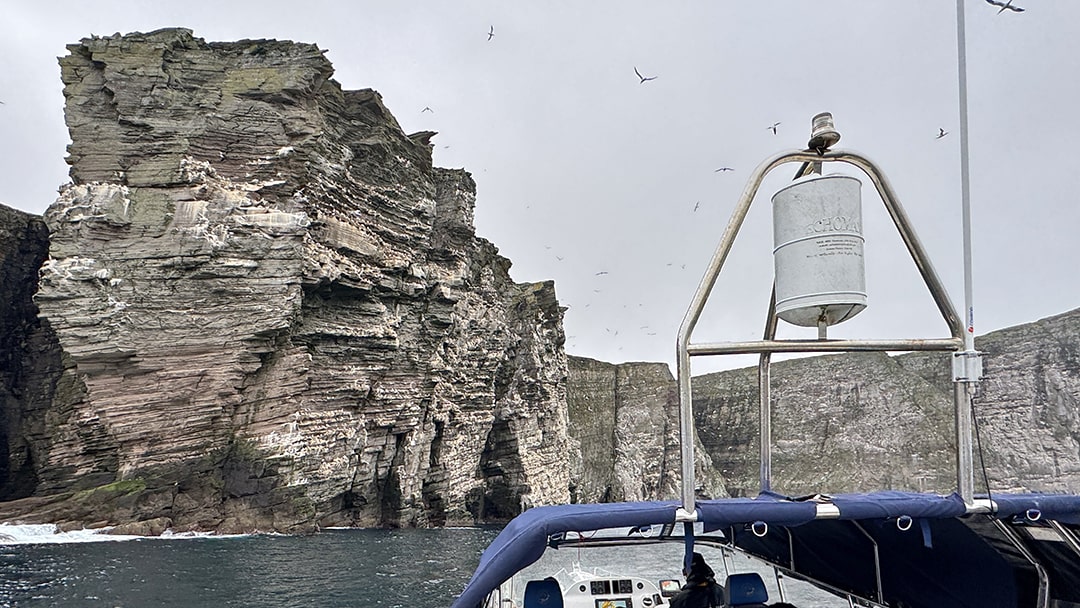
If you want to actually land on Noss you can take the wee NatureScot ferry across the Noss Sound from the neighbouring island of Bressay when the weather allows. You miss out, though, on savouring these sea cliffs from the water, which for me is the star attraction. Being down by the water with the salty air in your nostrils and the all the birds splashing around is just the quintessential Noss experience for me.
Rangers are on hand to make sure people don’t trample all over the fragile environment and there is a modest visitor centre. A choice of walking routes opens up Noss. The two-mile Inbye Trail takes in the fertile western end of the island, with great views from the Hill of Papilgeo. The Gannet Trail meanwhile sweeps off for just over four miles along the south coast to the gannetry and seabird cliffs of the Noup. To cover as much as humanly possible the Island Circuit heads anticlockwise around the coast taking in the highest point, the Noup, on a route just over five miles. We’re talking a half day for the latter, but it’s worth it. The walking here is a life-affirming job swathed by cobalt waters and big Shetland skies, the foreground painted in with an extravagant flourish of flora and fauna.
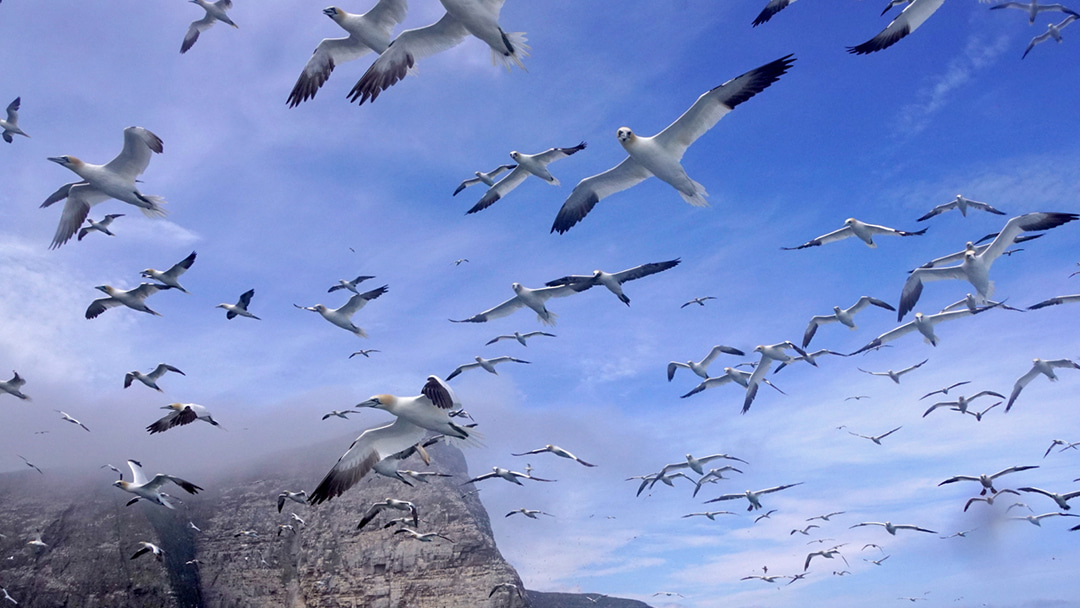
If you get the chance to head out to Noss on a boat trip I thoroughly recommend you snatch it with eager hands. It’s one of those spirit-soaring experiences that make a trip to the Northern Isles so deeply special. Weather has stopped me getting out here before and it was an utter delight to meet Phil and be expertly led through his special world into the land of patrolling minkes, diving gannets and soaring skuas. There is quite simply nothing quite like Noss.
 By Robin McKelvie
By Robin McKelvieRobin McKelvie is an award-winning travel writer and broadcaster who has been published in over 200 magazines and newspapers worldwide.
Pin it!